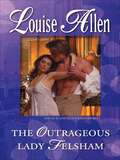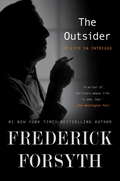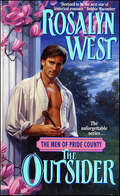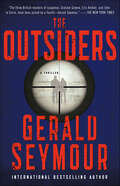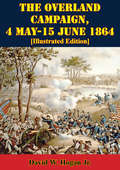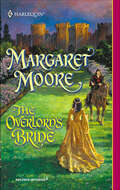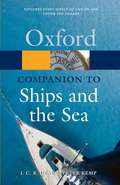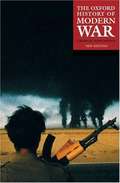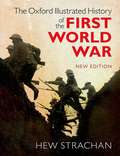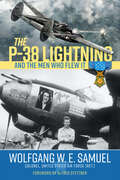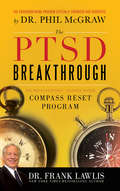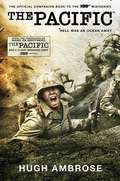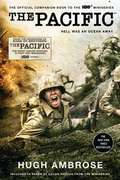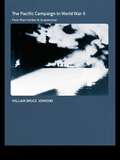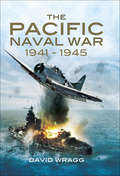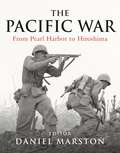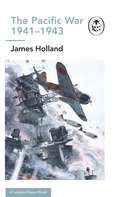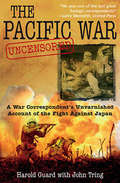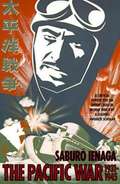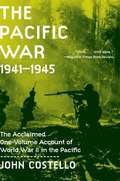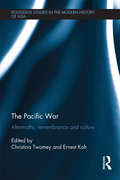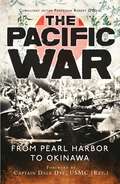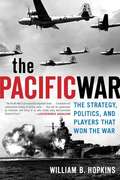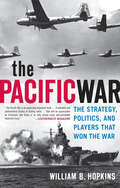- Table View
- List View
The Outrageous Lady Felsham (Those Scandalous Ravenhursts #2)
by Louise AllenA proper lady will throw caution—and her reputation—to the wind for the sake of a seductive soldier, in this sexy Regency romance.Belinda, Lady Felsham, was raised to be a proper lady. But now that she is freed from her unhappy marriage, she is determined to enjoy herself. She suspects that the breathtakingly handsome Major Ashe Reynard is exactly what she needs.Society is just waiting to pounce on the scandal. Still, the outrageous couple embarks on an affair . . . and Belinda becomes increasingly confused. She has no desire to marry, but Ashe is a man she cannot live without . . .
The Outsider: My Life in Intrigue
by Frederick ForsythFrom Frederick Forsyth, the grand master of international suspense, comes his most intriguing story ever--his own. For more than forty years, Frederick Forsyth has been writing extraordinary real-world novels of intrigue, from the groundbreaking The Day of the Jackal to the prescient The Kill List. Whether writing about the murky world of arms dealers, the shadowy Nazi underground movement, or the intricacies of worldwide drug cartels, every plot has been chillingly plausible because every detail has been minutely researched.But what most people don't know is that some of his greatest stories of intrigue have been in his own life.He was the RAF's youngest pilot at the age of nineteen, barely escaped the wrath of an arms dealer in Hamburg, got strafed by a MiG during the Nigerian civil war, landed during a bloody coup in Guinea-Bissau (and was accused of helping fund a 1973 coup in Equatorial Guinea). The Stasi arrested him, the Israelis feted him, the IRA threatened him, and a certain attractive Czech secret police agent--well, her actions were a bit more intimate. And that's just for starters.It is a memoir like no other--and a book of pure delight.From the Hardcover edition.
The Outsider: The Outsider (The Men of the Pride Country #2)
by Rosalyn WestThe Men of Pride CountyThey left as boys, fired by visions of honor and glory. They returned as men, was-weary and with heavy hearts, yet determined to find love and rebuild their lives in the crumbled ruins of the South. these are their stories:From the moment Hamilton Dodge set eyes on Southern beauty Starla Fairfax, the sparks flew. She was flirtatious, frivolous. . .everything that he was not. And yet he couldn't get her out of his mind. So he asked her to marry, never dreaming she'd say yes. After all, he was a Yankee who'd come to Pride County to rebuild his life, and she was one of the town's leading belles.But Hamilton didn't fool himself--Starla agreed to be his wife in name only because she needed a strong man to protect her honor. Yet as their cool agreement gave way to the fires of passion, Hamilton realized he'd never rest until Starla became his wife--in every way.
The Outsiders: A Thriller
by Gerald SeymourA couple finds their perfect beach vacation shattered when MI5 use their villa to spy on the crime boss next door in the newest thriller from the "best spy novelist ever" (Philadelphia Inquirer)MI5 officer Winnie Monks has never forgotten - or forgiven - the brutal murder of a young agent on her team at the hands of a former Russian Army officer turned fixer and criminal known as the Major. Now, ten years later, she learns that the Major is travelling to a villa at the popular Spanish holiday destination Costa del Sol, and she asks permission to send in a surveillance unit. The spooks locate an empty property near the Major's: the Villa Paraiso. It's perfect to spy from - and as a base for Winnie's darker, less official, plans. But it turns out the villa isn't deserted. The owners have invited a young British couple to house sit while they are away. Jonno and Posie, a new couple, think they are embarking on a romantic, carefree break in the sun. But when the MI5 team arrives in paradise, everything changes—their holiday is about to become a terrifying journey into the violent global business of organized crime in The Outsiders by Gerald Seymour—a sophisticated thriller from a renowned master.
The Overland Campaign, 4 May-15 June 1864 [Illustrated Edition] (The U.S. Army Campaigns of the Civil War #4)
by David W. Hogan Jr.Includes 8 maps and numerous other illustrationsOne hundred and fifty years ago this spring, Lt. Gen. Ulysses S. Grant launched the campaign that marked the beginning of the end of the American Civil War. For over a month, he and General Robert E. Lee were locked in a remorseless struggle that took their armies across the woodlands and farm clearings of central Virginia on the road to the Southern capital of Richmond.In the Wilderness, Union and Confederate soldiers battled in an almost trackless forest in which the opposing sides could hardly see each other and the severely wounded fell victim to spreading flames from underbrush set afire. At Spotsylvania's Bloody Angle, for over twenty hours, opposing troops grappled from opposite sides of a breastwork in a pouring rain in some of the fiercest hand-to-hand fighting of the entire war. At Cold Harbor, perhaps 5,000 Federal troops fell in the first hour of a hopeless, bungled attack that Grant would forever regret having ordered. And at Yellow Tavern, Union horsemen cut down the great Confederate cavalry leader, Maj. Gen. James E. B. "Jeb" Stuart.The myth of chivalry that Stuart represented could find no room in a grim, pitiless contest that inflicted almost 100,000 casualties, went far toward ruining two great American armies, and foreshadowed the massive industrial conflicts of the twentieth century. Yet, after six weeks of bitter, unrelenting combat, the nation was that much closer to Appomattox Court House and eventual reunion.
The Overlord's Bride (The\warrior Ser. #5)
by Margaret MooreLord Kirkheathe's first wife was dead, and though his liege lorddeemed him guiltless, rumor yet tarred his reputation. Now ElizabethPerronet found herself his newly wedded bride with a question of herown: If Raymond D'Estienne were truly no savage, how had he unleashedin her things so…untamed and wild?Or so believed Raymond D'Estienne, courtesy of his late wife. What,then, was he to make of the remarkable Elizabeth Perronet, fresh fromthe convent and determined to change his life—in ways he'd neverdreamed!
The Oxford Companion to Ships and the Sea (2nd edition)
by I. C. B. Dear Peter KempThe most comprehensive and authoritative reference book of its kind, The Oxford Companion to Ships and the Sea is a completely revised and updated edition of a classic volume that was first published in 1976, to huge acclaim. It brings together more than 2,600 entries on every imaginable aspect of the seas and the vessels that sail on them, from shipbuilding, yachting, diving, and marine mammals, to tidal power, piracy, and the literature and language of the sea. The Companion includes authoritative and fascinating entries on maritime history, including its greatest naval battles, like Pearl Harbor and Trafalgar, its most well-known ships, and its most famous individuals, both real and fictional. This second edition provides significant new material on topics that have come to prominence in recent times, such as oceanography and marine archaeology. Key contributions on these subjects include climate change, environmental issues, marine pollution, and marine wildlife. Among the many brand new entries to this edition are up-to-the-minute articles on underwater vehicles, tsunamis, warfare at sea, the Economic Exclusion Zone, and ship preservation. Entries are fully cross-referenced, and the text is now illustrated with over 260 detailed drawings, making it more accessible than ever before. It will prove an essential point of reference for anyone with a professional or amateur interest in the seas, from yachtsmen, maritime historians, and oceanographers, to naval architects, environmentalists, and armchair sailors.
The Oxford History of Modern War (New Updated Edition)
by Charles TownshendThis is a compilation of essays on modern war.
The Oxford Illustrated History of the First World War: New Edition
by Hew StrachanThe First World War, now a century ago, still shapes the world in which we live, and its legacy lives on, in poetry, in prose, in collective memory and political culture. By the time the war ended in 1918, millions lay dead. Three major empires lay shattered by defeat, those of Germany, Austria-Hungary, and the Ottomans. A fourth, Russia, was in the throes of a revolution that helped define the rest of the twentieth century. <P><P> The Oxford Illustrated History of the First World War brings together in one volume many of the most distinguished historians of the conflict, in an account that matches the scale of the events. From its causes to its consequences, from the Western Front to the Eastern, from the strategy of the politicians to the tactics of the generals, they chart the course of the war and assess its profound political and human consequences. Chapters on economic mobilization, the impact on women, the role of propaganda, and the rise of socialism establish the wider context of the fighting at sea and in the air, and which ranged on land from the trenches of Flanders to the mountains of the Balkans and the deserts of the Middle East. <P><P> First published for the 90th anniversary of the 1918 Armistice, this highly illustrated revised edition contains significant new material to mark the 100th anniversary of the war.
The P-38 Lightning and the Men Who Flew It
by Colonel Wolfgang W. SamuelThe P-38 Lightning was one of the fastest operational fighters of World War II, famous for its successes in North Africa and the Pacific. In The P-38 Lightning and the Men Who Flew It, Wolfgang W. E. Samuel shares the stories of the young men who climbed into the cockpits of the P-38 to fight for freedom, and of those who created, tested, and deployed these fearsome machines. The P-38 was the product of the Lockheed Corporation, the first fighter they ever built, principally conceptualized by Kelly Johnson, whose design was to meet Air Corps specifications. To do that he came up with a twin-engine aircraft with a tricycle landing gear unlike any other military aircraft of the time. But it was no easy plane to fly. Many pilots died in training and routine flying before ever meeting an opponent in combat. P-38 units were formed quickly once the United States entered World War II in December 1941. Training was rushed to get pilots and planes to Europe as quickly as possible to serve as bomber escorts. Although the P-38 could fly at the high altitudes the bombers flew, it was not the right aircraft for the mission. Without an engine in front of the cockpit to keep the pilot warm, the plane was frigid. Pilots suffered and were sometimes so weakened by the brutal cold that they had to be lifted out of the cockpit upon landing, and the bombers suffered severe losses. In North Africa’s warmer air, however, the P-38 came into its own. With four 50-caliber machine guns and a 20mm cannon in its nose, the P-38 was a formidable adversary. With proven success in the Mediterranean, P-38 squadrons were transferred to the Pacific Theater, where they flourished. Focusing on the men who flew this challenging aircraft and the men who designed and decided how to deploy it, Samuel shares stories of bravery and ingenuity alongside an aviation history long neglected. The P-38’s deployment is covered in some detail, including the actions of Richard Bong, who became the US forces’ ace of aces. In the Pacific skies, the P-38, its pilots, and designers made the heroic history captured here.
The PTSD Breakthrough: The Revolutionary, Science-Based Compass RESET Program
by Frank Lawlis<p>We are facing a hidden and growing epidemic. More than a million veterans and everyday citizens have been affected with Post Traumatic Stress Disorder as a result of a traumatic event or personal experience. And until now, there has been little understanding of how the disorder truly takes hold and how to reverse its destruction. Finally, a breakthrough approach has been discovered. <p>Previously PTSD was treated as a psychiatric disorder only, but new scientific research shows that biological factors play just as an important of a role, specifically brain and soft-tissue damage underlying the root causes of the disorder. The PTSD Breakthrough is the first book to describe the true causes of PTSD and provide an effective program for overcoming the disorder. There is hope. <p>Through the research conducted by Dr. Lawlis and his colleagues, for the first time those who suffer from PTSD, as well as their families and loved ones, will discover that this disorder can be treated and healed, and that our veterans and all who suffer from PTSD can regain true peace in their lives. </p>
The Pacific
by Hugh AmbroseIn this companion to the HBO miniseries, Hugh Ambrose reveals the intertwined odysseys of four U.S. Marines and a U.S. Navy carrier pilot during World War II. Between America's retreat from China in late November 1941 and the moment General MacArthur's airplane touched down on the Japanese mainland in August of 1945, five men connected by happenstance fought the key battles of the war against Japan. From the debacle in Bataan, to the miracle at Midway and the relentless vortex of Guadalcanal, their solemn oaths to their country later led one to the Great Marianas Turkey Shoot and the others to the coral strongholds of Peleliu, the black terraces of Iwo Jima and the killing fields of Okinawa, until at last the survivors enjoyed a triumphant, yet uneasy, return home. In The Pacific, Hugh Ambrose focuses on the real-life stories of the five men who put their lives on the line for our country. To deepen the story revealed in the miniseries and go beyond it, the book dares to chart a great ocean of enmity known as The Pacific and the brave men who fought. Some considered war a profession, others enlisted as citizen soldiers. Each man served in a different part of the war, but their respective duties required every ounce of their courage and their strength to defeat an enemy who preferred suicide to surrender. The medals for valor which were pinned on three of them came at a shocking price---a price paid in full by all.
The Pacific
by Hugh AmbrosePenguin delivers you to the front lines of The Pacific Theater with the real-life stories behind the HBO miniseries. Between America's retreat from China in late November 1941 and the moment General MacArthur's airplane touched down on the Japanese mainland in August of 1945, five men connected by happenstance fought the key battles of the war against Japan. From the debacle in Bataan, to the miracle at Midway and the relentless vortex of Guadalcanal, their solemn oaths to their country later led one to the Great Marianas Turkey Shoot and the others to the coral strongholds of Peleliu, the black terraces of Iwo Jima and the killing fields of Okinawa, until at last the survivors enjoyed a triumphant, yet uneasy, return home. In The Pacific, Hugh Ambrose focuses on the real-life stories of the five men who put their lives on the line for our country. To deepen the story revealed in the miniseries and go beyond it, the book dares to chart a great ocean of enmity known as The Pacific and the brave men who fought. Some considered war a profession, others enlisted as citizen soldiers. Each man served in a different part of the war, but their respective duties required every ounce of their courage and their strength to defeat an enemy who preferred suicide to surrender. The medals for valor which were pinned on three of them came at a shocking price-a price paid in full by all. View the HBO trailer Watch a Video View a video with Hugh Ambrose Watch a Video .
The Pacific
by Hugh AmbroseThe New York Times bestselling official companion book to the Emmy(r) Award-winning HBO(r) miniseries. Between America's retreat from China in late November 1941 and the moment General MacArthur's airplane touched down on the Japanese mainland in August of 1945, five men connected by happenstance fought the key battles of the war against Japan. From the debacle in Bataan, to the miracle at Midway and the relentless vortex of Guadalcanal, their solemn oaths to their country later led one to the Great Marianas Turkey Shoot and the others to the coral strongholds of Peleliu, the black terraces of Iwo Jima and the killing fields of Okinawa, until at last the survivors enjoyed a triumphant, yet uneasy, return home.In The Pacific, Hugh Ambrose focuses on the real-life stories of five men who put their lives on the line for our country. To deepen the story revealed in the HBO(r) miniseries and go beyond it, the book dares to chart a great ocean of enmity known as the Pacific and the brave men who fought.From the Trade Paperback edition.
The Pacific Campaign in World War II: From Pearl Harbor to Guadalcanal (Cass Series: Naval Policy and History)
by William Bruce JohnsonThis is a fascinating new account of how diplomacy and politics gave way to military strategy and warfare in the Pacific. Presenting previously unpublished photographs, interviews with veterans, newly commissioned maps and new translations of Japanese sources, this book freshly examines the key events in the fight for the Pacific. Detailing the background to the Japanese attack on Pearl Harbor it shows how the decision-makers in Washington, following consultation with the leaders of Britain, Australia and New Zealand, moved to stop Japan from its drive toward Australia by initiating a counterthrust in the Solomon Islands. It also shows how qualities and character of leadership are crucial to winning wars, detailing how Admiral Ernest J. King managed to commit the Marine Corps to ground action in the South Pacific six months earlier than originally planned, by ignoring the Roosevelt’s commitment to defeat Germany prior to fighting Japan, and by outmaneuvering Gen. Douglas MacArthur for leadership. It also explains how Marines under Maj. Gen. A.A. Vandegrift, despite inadequate logistical support, managed to prevail in the Americans’ first ground campaign of World War II, making Japan’s ultimate defeat inevitable. In addition to recounting these key events, it traces how censorship and patriotism influenced the reporting of the conflict in America, how Hollywood films further shaped public opinion by portraying the significant events in particular ways, and how certain crucial decisions such as the early bombing raid of Tokyo, and giving Douglas MacArthur command of the war effort in Australia, were "political" rather than "strategic," and were made to foster morale rather than to gain any military advantage. This book will be of great interest to all students and scholars of Military History, and to all readers with a general interest in World War II, particularly in the conflicts of the Pacific, Pearl Harbor and Guadalcanal.
The Pacific Naval War 1941–1945
by David WraggThis vividly detailed WWII history chronicles the bitter conflict at sea between Allied and Japanese naval forces. The Pacific War was primarily fought at sea. Naval power allowed the Japanese to mount their attack on Pearl Harbor and then advance westwards and southwards. It also enabled the Allies to strike back and even take the war to Japan itself. The tide turned very quickly, with the US victory at Midway in June of 1942 ending any Japanese hope of domination. The book begins with the decisions that led Japan into war, and the difficult situation faced by the Royal Navy elsewhere. It then describes how, within a couple of years, the Royal Navy was able to send the strongest and most balanced fleet in its history to severely disrupt Japanese operations. Historian David Wragg also covers how the Royal Australian Navy developed into a viable naval force ready to become a major fleet in the immediate postwar years. The progress of the war is supported by eyewitness accounts from those involved in the fighting at sea.
The Pacific War
by Daniel MarstonA new paperback edition of one of the bestselling World War II Osprey titles, The Pacific War Companion brings together the perspectives and insights of world-renowned military historians. From the Japanese attack on Pearl Harbor through the release of the atomic bombs on Hiroshima and Nagasaki, the conflict in the Pacific was marked by amazing tactical innovations, such as those in amphibious warfare, and horrific battles that raged in the unforgiving climate of the island jungles. Each chapter in this book focuses on a different aspect of this conflict, from the planning of operations to the experiences of the men who were there.
The Pacific War 1941-1943: Book 6 of the Ladybird Expert History of the Second World War (The Ladybird Expert Series #12)
by James HollandPart of the ALL-NEW LADYBIRD EXPERT SERIES- Why did Japan attack Pearl Harbour?- How did the Americans underestimate the Japanese?- What were 'banzai charges,' and how did the discipline of the Japanese lead to their downfall?FOLLOW the lethal turns of World War II through the theatre of the Pacific War. From the devastating attack on Pearl Harbour to the decisive triumph of the Allies at Guadalcanal, the entry of Japan and America to the fighting changed the course of World War II completely.JAPAN'S DEADLY OFFENSIVE, AMERICA'S DECISIVE VICTORYWritten by historian, author and broadcaster James Holland, THE PACIFIC WAR 1941-1943 is an essential, accessible introduction to the battles that defined Pacific conflict in World War II.
The Pacific War Uncensored: A War Correspondent's Unvarnished Account of the Fight Against Japan
by Harold Guard John TringA WWII reporter&’s dangerous adventures in Singapore, Malaya, Java, and more. Harold Guard became a war correspondent by chance after he&’d been invalided out of the navy following a submarine accident. Thereafter, working for United Press, he gained a front-row seat to many of the most dramatic battles and events of the century. In March 1942, Guard arrived in Australia, having narrowly escaped from Japanese forces invading Singapore and Java. His dispatches from that disastrous front prompted one observer to comment on &“the crisis days when everybody except Harold Guard was trying to hush up the real situation.&” At the time, he was acclaimed by the Australian press as one of the top four newspapermen covering the war in the Pacific. Over the next three years, Guard was to have many more adventures reporting on the Pacific War, including firsthand experience flying with the US Air Force on twenty-two bombing missions, camping with Allied forces in the deadly jungles of New Guinea, and taking part in attacks from amphibious landing craft on enemy occupied territory. He also traveled into the undeveloped areas of Australia&’s northern territories to report on the construction of air bases being built in preparation for defending the country against the advancing Japanese. What made Harold Guard&’s achievements even more remarkable was that he was disabled and had to walk with a stiff right leg due to his navy injury. Despite this, he often reported from perilous situations at the front line, which gained him considerable notoriety within the newspaper world. Guard endeavored to give honest accounts, and this often brought him into conflict with the military censors. In this book, the full story of Guard&’s experiences and observations during the Pacific War have been reconstructed with the help of his dispatches, private correspondence, telegrams, and audio accounts. No longer subject to censorship, the starkly honest perceptions of how the Allies nearly failed and, at last, finally won the war can now be told.
The Pacific War, 1931-1945: A Critical Perspective on Japan's Role in World War II
by Frank Baldwin Saburo IenagaA portrayal of how and why Japan waged war from 1931-1945 and what life was like for the Japanese people in a society engaged in total war.
The Pacific War, 1941-1945
by John CostelloJohn Costello's The Pacific War has now established itself as the standard one-volume account of World War II in the Pacific. Never before have the separate stories of fighting in China, Malaya, Burma, the East Indies, the Phillipines, New Guinea, the Solomon Islands, and the Aleutians been so brilliantly woven together to provide a clear account of one of the most massive movements of men and arms in history. The complex social, political, and economic causes that underlay the war are here carefully analyzed, impelling the reader to see it as the inevitable conclusion to a series of historical events. And the bloody fighting that indelibly recorded names like Midway and Iwo Jima in the annals of human conflict is described in detail, through its ominous conclusion in the mushroom clouds of Hiroshima and Nagasaki.
The Pacific War: Aftermaths, Remembrance and Culture (Routledge Studies in the Modern History of Asia)
by Ernest Koh Christina TwomeyThe Pacific War is an umbrella term that refers collectively to a disparate set of wars, however, this book presents a strong case for considering this assemblage of conflicts as a collective, singular war. It highlights the genuine thematic commonalities in the legacies of war that cohere across the Asia-Pacific and shows how the wars, both individually and collectively, wrought dramatic change to the geo-political makeup of the region. This book discusses the cultural, political and social implications of the Pacific War and engages with debates over the war’s impact, legacies, and continuing cultural resonances. Crucially, it examines the meanings and significance of the Second World War from a truly international perspective and the contributors present fascinating case studies that highlight the myriad of localised idiosyncrasies in how the Pacific War has been remembered and deployed in political contexts. The chapters trace the shared legacy that the individual wars had on demographics, culture and mobility across the Asia Pacific, and demonstrate how in the aftermath of the war political borders were transformed and new nation states emerged. The book also considers racial and sexual tensions which accompanied the arrival of both Allied and Axis personnel and their long lasting consequences, as well as the impact returning veterans and the war crime trials that followed the conflict had on societies in the region. In doing so, it succeeds in illuminating the events and issues that unfolded in the weeks, months, and indeed decades after the war. This interdisciplinary volume examines the aftermaths and legacies of war for individuals, communities, and institutions across South, Southeast, and East Asia, Oceania, and the Pacific world. As such, it will be welcomed by students and scholars of Asian history, modern history and cultural history, as well as by those interested in issues of memory and commemoration.
The Pacific War: From Pearl Harbor to Okinawa
by Dale Dye Robert O'NeillOn December 7, 1941, Japanese fighter planes appeared from the clouds above Pearl Harbor and fundamentally changed the course of history; with this one surprise attack, the previously isolationist America was irrevocably thrown into the fray and World War II had begun in earnest.This definitive history reveals each of the major battles that America would fight in the ensuing struggle against Imperial Japan, from the naval clashes at Midway and Coral Sea to the desperate, bloody fighting on Iwo Jima and Okinawa. Each chapter reveals both the horrors of the battle and the Allies' grim yet heroic determination to wrest victory from what often seemed to be certain defeat, offering a valuable guide to the long road to victory in the Pacific. It is the definitive guide to a unique conflict in history, documenting the rise of naval aviation, spectacular amphibious operations, co-ordinated suicide tactics, and the birth of the atomic age.
The Pacific War: The Strategy Politics and Players that Won the War
by William B. HopkinsThis book provides a fresh take on World War II in the Pacific that goes beyond the simple recounting of battles won and lost to synthesize the strategies, politics, and key players that shaped the conduct of the war. The author takes a regional approach to this multifaceted, often nonlinear war conducted on land, sea (and significantly by America undersea), and in the air across the immense reaches of the Pacific to effectively develop the major themes and causes of the battles.
The Pacific War: The Strategy, Politics, and Players That Won the War
by William B. HopkinsThis “important comprehensive study” of WWII in the Pacific examines the high-level decision-making and strategy that led to victory (Roanoke Times).Once the stories have been told of battles won and lost, most of what happens in a war remains a mystery. So it has been with accounts of World War II in the Pacific, a complex conflict whose nature is often obscured by simple chronological narratives. In The Pacific War, William B. Hopkins, a Marine Corps veteran of the Pacific war and respected military history author, opens the story of the Pacific campaign to a broader and deeper view.Hopkins investigates the strategies, politics, and personalities that shaped the fighting. His regional approach to this complex war conducted on land, sea, and air offers an insightful perspective on how this multifaceted conflict unfolded. As expansive as the immense reaches of the Pacific, and as focused as the most intensive pinpoint attack on a strategic island, Hopkins’ account offers a fresh way of understanding the hows—and more significantly, the whys—of the Pacific War.
